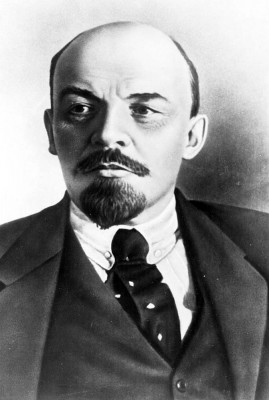
Vladimir Lenin (1870 – 1924) was the architect of the Soviet state and a founder of the Russian Communist Party which initiated the Bolshevik Revolution. His policies led to the development of the doctrine of Leninism which was later conjoined and codified with the work of Marx, his successor, producing the ideology known as Marxism-Leninism. This combined doctrine of Marxism-Leninism is what came to be known as the worldview of the Communists. Over the years he has been regarded as a great revolutionary thinker and leader since the days of Marx.
Lenin’s Early Days
Vladimir Lenin is widely considered as a controversial and influential figure of the 20th Century. He plotted the Bolshevik Revolution of Russia in 1917. Later he took over the leadership of the newly formed Union of Soviet Socialist Republics (USSR).
Vladimir was born in Simbirsk, Russia on April 22nd, 1870. His real name was Vladimir Ilich Ulyanov but he was later renamed Ulyanovsk in his own honor. Later, in 1901, he adopted a last name, Lenin when he was involved in underground work for his party. He came from a family of well-educated individuals. He was the third son of six children and was very close to his siblings and parents. His parents being both highly cultured and educated, they invoked a desire of learning among their children, particularly Vladimir. Therefore school became a central part in the childhood of Lenin. He loved studying and became a voracious reader. In high school he was top of his class showing a great talent in Greek and Latin.
However, not all his life went smoothly. There are two specific occasions that changed the shape of Lenin’s life completely. When Lenin was a young boy his father was an inspector of schools. His father was threatened to be given an early retirement by the suspicious Russian government which was nervous of the influence that the public schools were bringing to the Russian community. The other occasion occurred in 1887. Lenin’s brother Aleksandr was a student in the University. He got arrested and prosecuted with others for being a member of a group that was planning the assassination of Emperor Alexander III. Lenin was left as the man of the family since his father had passed away earlier. For Lenin’s family, the involvement of Aleksandr in the oppositional politics was not the only incidence. As a matter of fact, all of Lenin’s family took part in revolutionary activities.
Lenin’s Early Radicalism
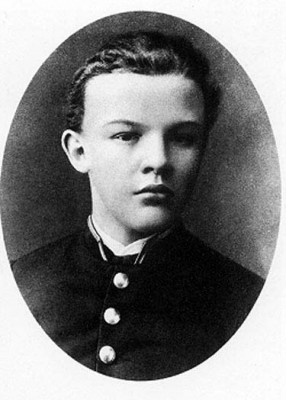 The year that Lenin’s brother was executed, he enrolled to study law at the Kazan University. However he did not stay there for long. During the first term, his stay was cut short after getting expelled for his role in a student demonstration. Lenin was forced to exile to the village of Kokushkino where his grandfather’s estate was. He started living with his sister Anna who had been ordered by the police to reside there after the authorities suspected her of radical political activities.
The year that Lenin’s brother was executed, he enrolled to study law at the Kazan University. However he did not stay there for long. During the first term, his stay was cut short after getting expelled for his role in a student demonstration. Lenin was forced to exile to the village of Kokushkino where his grandfather’s estate was. He started living with his sister Anna who had been ordered by the police to reside there after the authorities suspected her of radical political activities.
During his stay there, Lenin occupied himself by reading literature such as the novel by Nikolai Chernyshevsky, “What is to be done?” This novel tells a tale of a personality by the name Rakhmetov who has a single-minded commitment towards the revolution of politics. Vladimir also immersed himself in the writings of Karl Marx who was a German philosopher well-known for his book, Das capital. It was this book that made major impacts on his thinking and in the January of 1889, Vladimir Lenin declared himself a Marxist.
Ultimately, Lenin was able to finish his schoolwork and he received his law degree in 1892. He travelled and settled in the city of Samara where he served many clients, but mostly the Russian peasants. According to Lenin their struggles were in a class-biased legal system and this only strengthened his Marxist beliefs.
Over time, Lenin put more focus on revolutionary politics. In the mid-1890s he left Samara and moved to St. Petersburg, which was the capital of Russia. While in this city he met and connected with many other Marxists and he started to take more active roles in their undertakings. Their work failed to go unnoticed. As a result, Lenin, together with other Marxist leaders, got arrested in December 1895. He was exiled to Siberia for the next three years where Nadezhda Krupskaya, his fiancée and future wife joined him.
After the three years he was released from exile and spent a season in Munich, Germany. Here, together with other collaborators, Lenin founded a newspaper by the name Iskra which was meant to unite the European and Russian Marxists. Later he went back to St. Petersburg and intensified his leadership role as the head of the revolutionary movement. A remarkable event took place in 1903 during the 2nd Congress organized by the Russian Social Democratic Labor where Lenin argued forcefully for a streamlined leadership in the community. He demanded for a leadership that would run a network for workers and their lower party organization. According to him, if they were given an organization of revolutionaries, they would overturn the face of Russia.
The 1905 Revolution and the WWI
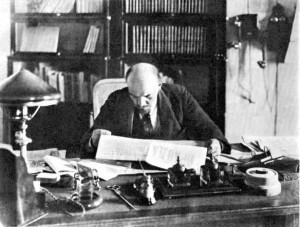 Lenin’s call for revolution was soon backed by events that took place. Russia went to war with Japan in 1904. The impact of the conflict was profound amongst the Russian community. Soon Russia suffered a number of defeats which constrained the domestic budget of the country. This caused all the citizens, rich or poor, to talk about their discontent over the political structure of the country and they started to call for reforms.
Lenin’s call for revolution was soon backed by events that took place. Russia went to war with Japan in 1904. The impact of the conflict was profound amongst the Russian community. Soon Russia suffered a number of defeats which constrained the domestic budget of the country. This caused all the citizens, rich or poor, to talk about their discontent over the political structure of the country and they started to call for reforms.
The situation got worse on January 9, 1905 when a number of unarmed personnel in the city of Petersburg carried their concerns to the city’s palace. They wanted to submit a petition directly to Emperor Nicholas II but they met security forces on the way who opened fire on them, killing and wounding hundreds. This crisis initiated what could be termed as the Russian Revolution of 1905.
With hopes of placating his citizens, Emperor Nicholas II allotted his manifesto in October. In the manifesto he offered a number of political concessions with the creation of an elective legislative assembly being the most notable. The legislation was known as Duma. However this did not satisfy Lenin. In fact he extended his frustrations to his fellow Marxist, especially a group known as Mensheviks, which was led by Julius Martov. They centered their attention on the driving forces of the revolution and the party structure of Russia. Many of Lenin’s comrades believed that the ultimate power must be placed with the bourgeoisie, but according to him, he passionately distrusted people with power. He instead argued that a complete and real revolution must be led by the working class. He said that the Socialist revolution could only spread through and outside Russia if it was led by the country’s proletariat.
But, according to the Mensheviks group, the ideas of Lenin were paving a way for a one-man autocracy over the same people he claimed to empower. The Mensheviks and Lenin’s group had sparred ever since the 2nd congress of the party. It was during that congress that Lenin’s group, which was known as the Bolsheviks, had been handed a slim majority. However their fighting continued on until 1912, when Lenin formally split his group during the party conference in Prague to form his own new separate entity.
During World War I, Vladimir Lenin went into exile once more. This time he took up residence in Switzerland, but his mind stayed focused on revolutionary politics the entire time that he was there. It was during his stay in Switzerland in 1916 he wrote and published a book by the title Imperialism, The Highest Stage of Capitalism. In his book, he defined the work of a future leader and argued that war was mainly caused by international capitalism.
Lenin as a Russian leader
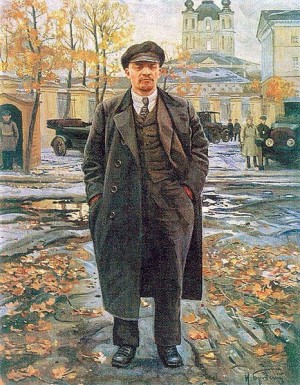 In 1917 he deposed the tsars. He quickly returned home and he immediately denounced the newly formed provincial government. The government comprised of a number of bourgeois liberal party leaders. He instead acknowledged and called for a Soviet government which would be ruled by peasants, workers and soldiers.
In 1917 he deposed the tsars. He quickly returned home and he immediately denounced the newly formed provincial government. The government comprised of a number of bourgeois liberal party leaders. He instead acknowledged and called for a Soviet government which would be ruled by peasants, workers and soldiers.
Towards the end of 1917 Lenin led a movement which was known as the October Revolution, a coup d’état. It was then followed by three years of civil war. The Lenin-led government of was faced by insurmountable odds. The Whites, or the anti-Soviet forces, headed majorly by the former tsarist admirals and generals, fought endlessly to overthrow the Red Regime of Lenin. They were aided and supplied with money and troops by the World War I allies.
Lenin was determined to win at any cost. He therefore portrayed himself as a ruthless leader as he pushed to secure greater power. In the process he launched a campaign which came to be identified as the Red Terror. It was a brutal campaign which he used to eliminate any opposition that he faced from the civilian population. In August, 1918 he narrowly escaped an assassination attempt after being severely injured by bullets from a radical opponent. After his recovery, he became more prominent among his countrymen, though his health never was fully regained.
Despite the growth in opposition, Lenin still became victorious, but he failed to get the kind of country that he expected to lead. He hoped that after defeating the opposition, he would have kept Russia tethered to the European capitalist system. Instead, the defeat ushered in a new epoch of international retreat from the Lenin way of government. According to him, Russia would have been void of the international wars and class conflict if his policy was fostered.
However, the Russia that he presided over was reeling from the bloody civil war he had helped to initiate. Poverty and famine shaped the lives of most Russian citizens. In 1921, he faced the same kind of peasant tactics that he used to rise to power. There were widespread strikes throughout the cities and in the countryside all threatening the stability of the government. Trying to ease the strikes, Lenin reacted by introducing New Economic Policy which then allowed the farmers to sell their grain in an open market.
His Later Years
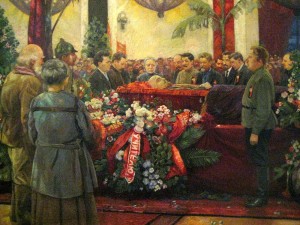 In May 1922, Lenin suffered a stroke followed by a second one in December of the same year. With his life on the line, he turned his main thoughts to how the newly formed USSR would be managed after he could not lead anymore. As the days went by, his government and party strayed far from the goals of his revolutionary leadership. Early in 1923, he issued a statement which was known as the testament in which he regretfully expressed remorse over his tyrannical power that subjugated the Soviet government. In particular, he was disappointed with Joseph Stalin who was the General Secretary of the Community Party. Joseph was blamed for beginning to amass great power.
In May 1922, Lenin suffered a stroke followed by a second one in December of the same year. With his life on the line, he turned his main thoughts to how the newly formed USSR would be managed after he could not lead anymore. As the days went by, his government and party strayed far from the goals of his revolutionary leadership. Early in 1923, he issued a statement which was known as the testament in which he regretfully expressed remorse over his tyrannical power that subjugated the Soviet government. In particular, he was disappointed with Joseph Stalin who was the General Secretary of the Community Party. Joseph was blamed for beginning to amass great power.
On March 10, 1923, his health deteriorated and he suffered another severe blow after having a third stroke. This stroke was more severe than the previous ones: he lost his ability to speak. It became hard for him to communicate with his peers and govern the country. As a result he ended his political work some ten months later on January 21, 1923.
Death
Lenin died in 1924 in a village currently known as Gorki Leninskiye in Russia. He had made a request to his Russian people which stipulated that his corpse to be embalmed and then placed in a mausoleum on the Moscow’s Red Square. To this day his body is stored in a glass coffin in that mausoleum where people come to view his body. In addition there is hardly a city in Russia without a street that is named after him.